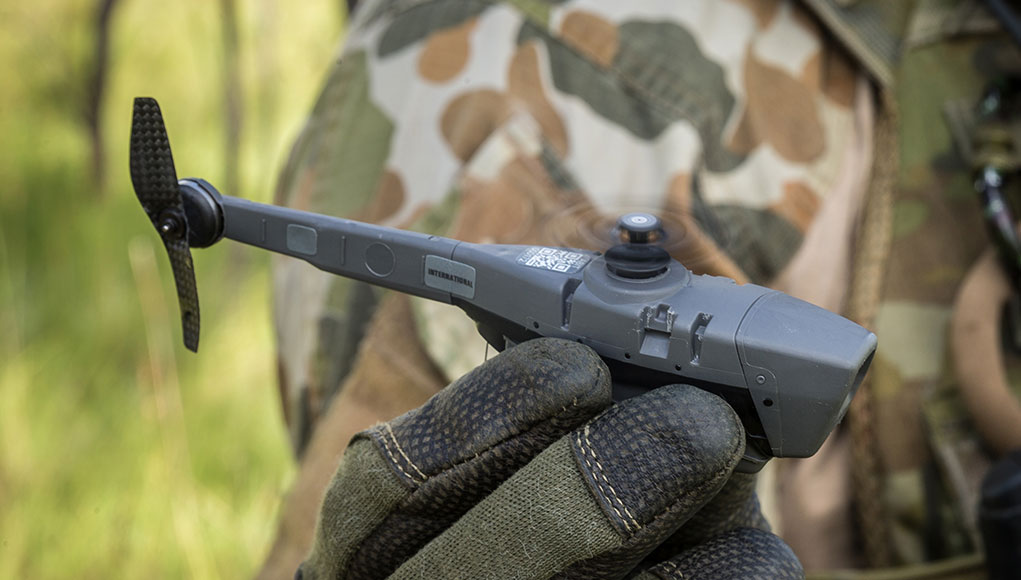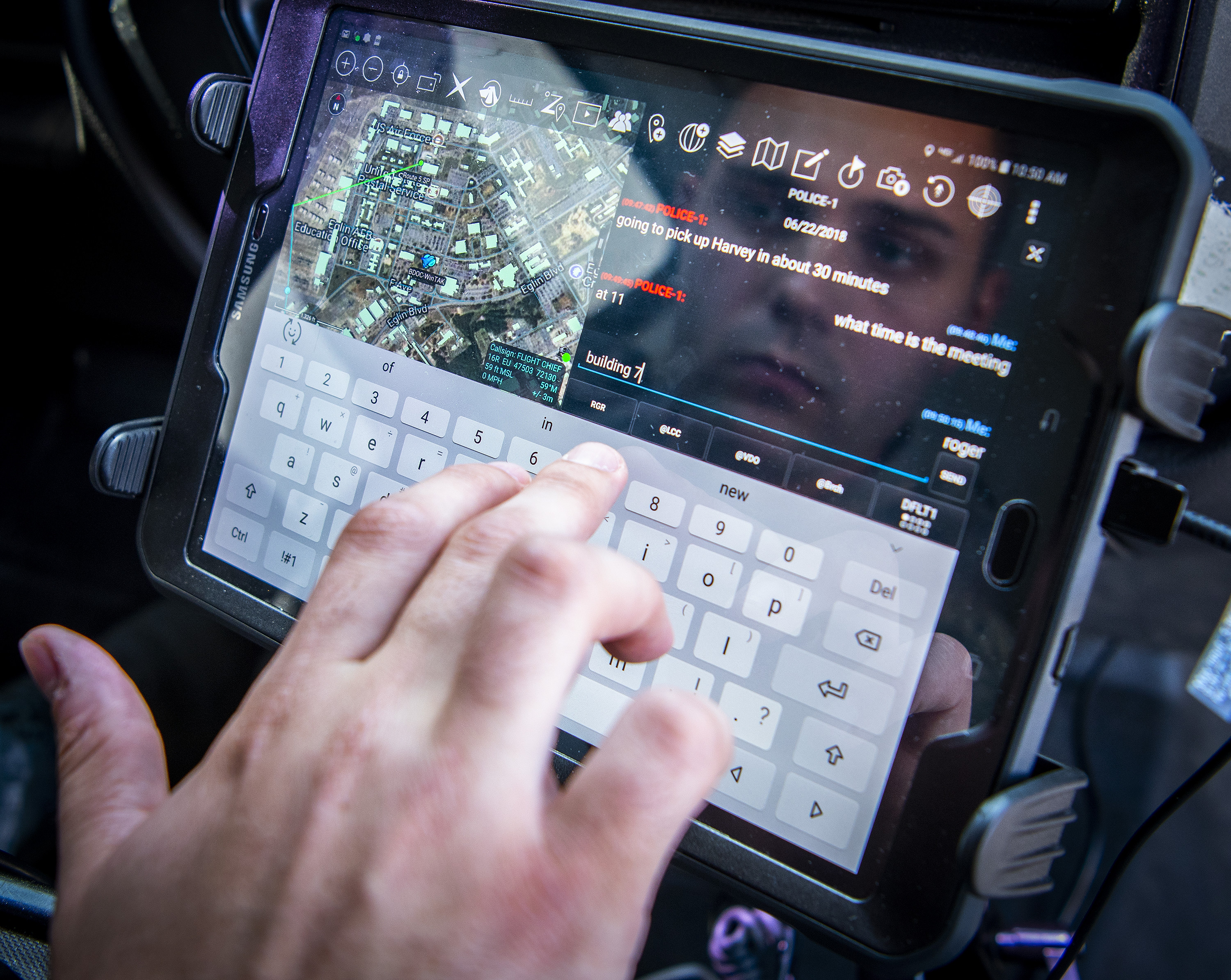From Government Computer News:

Marine Reserves Maj. Christopher Thobaben came up with the idea for an automated system for delivering supplies to troops. He sent a basic sketch to a friend who told him to make it official.
“I was very critical of Marine Corps logistics and our innovation since World War II,” Thobaben said. For more than a half-century, he argued, “we basically just made the horse faster.”
Thobaben’s idea for moving supply delivery to drones was demonstrated March 14 at the Marine Corps Base in Quantico, Va. The Hive Final Mile project consists of a mobile application for placing orders to drones, an automated drone launcher (the Hive), software for determining what drone to fly and managing flight paths, and a cloud storage component for keeping track of all the flights and orders.
Everything starts with an Android tablet.
Kyle Aron, an engineer with Soar Technology, helped build a plugin for the Android Tactical Assault Kit (ATAK), a mapping application originally developed by Defense Advanced Research Projects Agency and the Air Force Research Laboratory. Users place orders via the app for ammunition, a tourniquet, water or any other available item that can be delivered by drone. They then specify the drop-off location and other variables.
ATAK sends the request to Sentien Robotics’ Shepherd software, which automates parts of the process. First, it automatically decides what kind of drone it needs to send — do the troops need an eye in the sky? It’ll send one outfitted with a camera. Do medics need an order of insulin? Shepherd send a drone that delivers medical supplies.
For the Hive Final Mile demonstration, the transmissions were sent over Wi-Fi using repeaters to help the signal make it across the field, but Sentien Robotics CEO Brandon Borko said the communications method can be adapted to whatever connectivity is available.
Shepherd also automates the process for deconflicting flights, ensuring drones don’t run into one another in the air.
“We developed a piece of software [Shepherd] that does deconfliction for all the vehicles and allows us to take mission-level requests and do all the automation required to make that mission happen,” said Christopher Vo, Sentien Robotics’ chief scientist.
Shepherd can be uploaded onto a wide range of hardware, but for the Quantico demonstration it was running on the Hive, which is a small white trailer that looks like a small generator parked at a construction site. The Hive can store 18 hobbyist-sized drones on shelves inside, launch them automatically and charge them upon their return. A robotic process brings the selected drone to a launching platform where it will eventually take flight.
Shepherd then sends all of the flight information to a Salesforce government cloud environment through an application programming interface. The Salesforce dashboard shows information on every flight that has been queued, every flight that has been completed and specific details for each one. Users can see flight times, what was ordered, locations, order numbers and other information, according to Mark Bailey, a senior test engineer with Scientific Research Corporation.
Salesforce does not currently transmit data to Shepherd, but Bailey said that capability, which would allow users to see what inventory is available within ATAK, will be added in the future.
Salesforce’s dashboarding capabilities allow users to create simple bar graphs or pie charts for different metrics, and SRC and Salesforce have been experimenting with different reporting processing for this project, Bailey said.
The eventual goal is to scale the technology to be able to work with thousands of drones, Thobaben said. Right now it’s working with dozens, but he said he expects to reach a larger scale in a little over a year.
“As we scale up, there’s going to be bottlenecks along the way,” Borko warned.
Currently, one of those pain points is loading the payload. Right now if a drone is to deliver ammunition, that ordnance must be attached to the drone by hand. But Borko and Thobaben envision an environment where no human is involved in the process, except for ordering.
Additionally, as hundreds and then thousands of drones are added to a network, bandwidth will become an issue, Borko said. Network capacity will be addressed by offloading navigational processing from Shepherd and doing more of it onboard the drone with collision avoidance systems.
Cybersecurity is also a concern for projects that involve autonomous systems and large amounts of data stored in a cloud environment — not to mention the delivery of both valuable and potentially deadly supplies.
“Anything that operates on the ‘interwebs’ of the world is going to be vulnerable,” Thobaben said.
The Salesforce environment is compliant with the Federal Risk and Authorization Management Program up to Level 4, and none of the data is stored outside the United States, Bailey said.
The security of the drone management system is something industry is currently focused on and that Sentien Robotics, specifically, plans to keep an eye on, Borko told GCN.
“Cybersecurity is a big concern for these platforms because you don’t want to have [drones] in the air and who controls them get changed to someone else,” he said. “We’re going to incorporate the technologies as they come out.”
The Hive Final Mile project is a joint logistics initiative that involves both the Marine Corps Next Generation Logistics branch and the Office of the Secretary of Defense’s Rapid Reaction Technology Office.


